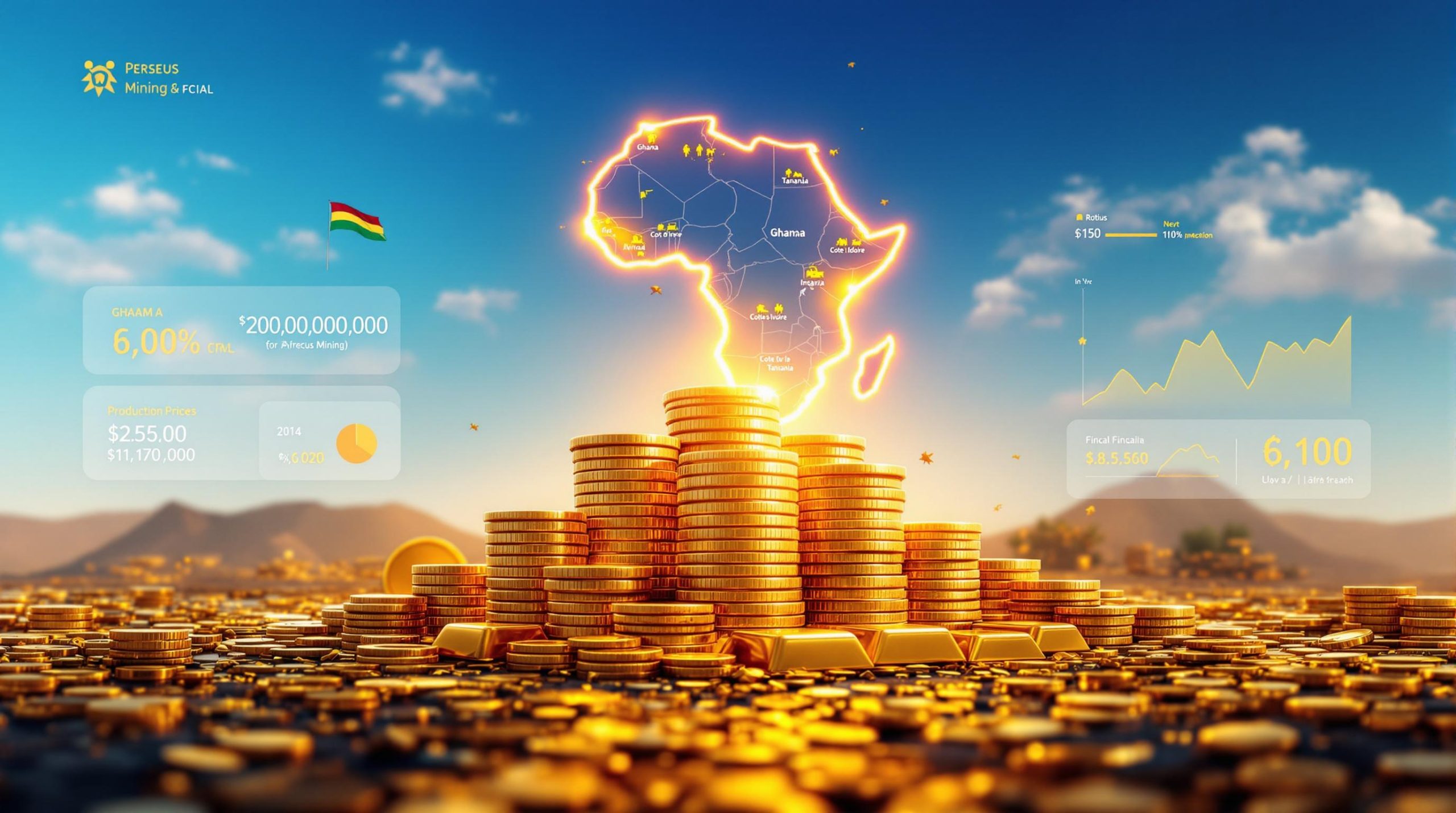Understanding China's Rare Earth Dominance
China has established an unprecedented grip on the global rare earth supply chain, controlling over 90% of the world's processing capacity for these critical minerals. In April 2025, Beijing implemented export permit requirements as a strategic response to escalating US‑China trade impacts. This move sent shockwaves through global manufacturing sectors, particularly the automotive industry, which depends heavily on rare earth elements for numerous critical components.
"The restrictions represent a calculated response to U.S. tariffs," notes industry analysts tracking the developing situation. "What makes this particularly concerning is the timing—occurring amid the global push toward electrification."
The Global Rare Earth Supply Chain
Despite their name, rare earth elements aren't particularly scarce in terms of geological abundance. The challenge lies in their concentration and processing. China's dominance stems from decades of strategic investment in mining operations, refining facilities, and technical expertise. The country has systematically developed capabilities that other nations are now scrambling to replicate.
The supply chain vulnerability became starkly apparent when Beijing's export permits created immediate bottlenecks for international manufacturers. These restrictions affect 17 metallic elements with unique magnetic, catalytic, and luminescent properties that make them irreplaceable in modern manufacturing.
Industry Insight: The rare earth crisis of 2010-2011, when China restricted exports and prices soared by 750%, served as an early warning. The current situation appears to be following a similar pattern but with potentially greater impact due to higher EV production volumes.
While Australia, the United States, and other nations have been developing alternative processing capacity, these facilities represent a fraction of China's capabilities. Industry estimates suggest that non-Chinese processing may account for less than 15% of global mining landscape—insufficient to address immediate supply disruptions.
Why Rare Earth Elements Matter for Vehicle Manufacturing
Rare earth elements play a crucial role in automotive manufacturing far beyond electric vehicles. These elements—particularly neodymium, praseodymium, dysprosium, and terbium—are essential components in:
- Permanent magnets for electric motors and generators
- Windshield-wiper motors and power window mechanisms
- Anti-lock braking sensors and electronic stability control
- Catalytic converters for emissions control
- LED headlights and display screens
- Battery technology components and control systems
For electric vehicles specifically, high-performance permanent magnets containing rare earth elements enable motors to be smaller, lighter, and more efficient than alternatives. A typical EV uses approximately 1-2 kg of rare earth elements, primarily in the motor assembly.
The substitution challenge: Engineers have investigated alternatives, but most involve significant trade-offs. Induction motors (used in some Tesla models) avoid rare earth dependency but typically weigh more and operate less efficiently in certain applications. Switched reluctance motors offer another alternative but present control complexity and noise issues that require substantial redesign.
How Are Automakers Responding to Supply Uncertainties?
The automotive industry's response to China's rare earth export restrictions has varied dramatically, highlighting differences in supply chain resilience, inventory positions, and technological strategies.
Tata Motors' Strategic Approach
India's Tata Motors has projected confidence amid the supply chain disruptions. As of June 2025, the company reported no production curtailments related to rare earth curbs.
"Currently, I think there's no panic because we believe the supplies are coming through," stated PB Balaji, Tata Motors' Chief Financial Officer. "There's no production curtailment. Nothing is being planned at this point in time."
This measured response stems from several factors:
- Strategic inventory management – Maintaining sufficient buffer stocks
- Diverse supplier relationships – Leveraging partnerships beyond China
- Technical adaptability – Actively exploring alternative technologies
Tata Motors is pursuing a dual-track strategy to mitigate future risks. First, the company is seeking alternate sources for rare earth magnets from countries developing processing capacity, including Australia and Vietnam. Simultaneously, their engineering teams are investigating motor designs with reduced rare earth requirements.
Contrasting Responses from Other Manufacturers
Not all automakers have weathered the supply chain disruptions as effectively. Maruti Suzuki, another major Indian manufacturer, cut its near-term production targets for the e-Vitara EV by approximately 66% according to Reuters reporting in early June 2025.
This stark contrast between two manufacturers operating in the same market highlights how vulnerability levels differ based on:
- Existing inventory positions – Buffer stocks and forward-purchasing agreements
- Supply chain diversity – Dependency on Chinese processing
- Technical architecture – Vehicle designs requiring specific rare earth formulations
- Production scheduling flexibility – Ability to shift between vehicle types
European manufacturers have generally reported intermediate impacts, with most implementing 15-30% reductions in EV production targets while maintaining conventional vehicle output. Japanese automakers have leveraged closer regional ties and government stockpiles to minimize immediate disruptions.
Market Analysis: The divergence in manufacturer responses creates potential for market share shifts in the EV segment through 2026, with companies maintaining production continuity gaining competitive advantage.
What Are the Financial Implications for Automotive Companies?
The rare earth supply constraints are creating cascading financial effects throughout the automotive industry, impacting profitability projections, pricing strategies, and investment priorities.
Impact on Production Costs and Pricing
Jaguar Land Rover, a Tata Motors subsidiary, has already revised its fiscal 2026 EBIT margin forecast downward from 10% to 5-7%, citing "uncertainty in the global auto industry" from both U.S. tariffs and rare earth supply issues. This significant adjustment signals the material financial impact these supply chain disruptions are having on even well-positioned manufacturers.
Industry analysts estimate that rare earth magnet costs—which typically represent 1-3% of an EV's total production cost—could increase by 200-300% if supply constraints persist. These increases would add approximately $400-900 to the manufacturing cost per vehicle, depending on motor design and specifications.
Automakers are responding with calibrated pricing strategies:
- Selective price increases on models with higher rare earth content
- Option package restructuring to maintain entry-level price points
- Accelerated introduction of redesigned models using alternative technologies
- Margin compression absorption for strategic market segments
When asked about potential manufacturing relocation to the U.S. to mitigate tariff impacts, Tata Motors' CFO Balaji confirmed no such plans, indicating the company's focus on adapting within its existing global footprint rather than pursuing costly facility relocations.
Investment in Alternative Technologies
The supply disruption has accelerated research into rare earth substitutes and alternative motor designs. Major manufacturers are evaluating:
- Induction motors – Tesla's approach, eliminating rare earth dependency
- Switched reluctance motors – Higher complexity but zero rare earth content
- Reduced-content magnets – Using sophisticated alloys to maintain performance with less material
- Ferrite-based designs – Older technology with performance limitations but excellent supply security
Cost-benefit timeline challenge: Engineering alternatives typically require 18-36 months of development and testing before production implementation. This creates a mismatch between immediate supply challenges and long-term technical solutions.
Financial analysts project that R&D spending on rare earth alternatives will increase 45-60% industry-wide through 2027, representing a significant reallocation of development resources that might otherwise focus on battery technology or autonomous driving features.
How Are Governments Responding to Rare Earth Supply Challenges?
The geopolitical implications of China's rare earth dominance have prompted varied government responses worldwide, from strategic stockpiles to domestic production incentives.
India's Strategic Initiatives
According to Reuters reporting from early June 2025, the Indian government has initiated talks with automotive companies to establish long-term stockpiles of rare earth magnets. This public-private partnership approach aims to create critical minerals energy security that could buffer manufacturers during supply disruptions.
Additionally, India is developing fiscal incentives for domestic rare earth production, though the country faces significant technical challenges in establishing processing capacity comparable to China's. These incentives include:
- Tax benefits for companies investing in extraction and processing
- Research grants for technical development of processing methods
- Expedited permitting for production facilities
- Import duty reductions on processing equipment
While these measures represent important steps toward supply diversification, industry experts note that establishing commercially viable rare earth processing at scale typically requires 3-5 years from initial investment to production.
Global Policy Responses
Other nations are implementing varied approaches to rare earth security:
United States: The Defense Production Act has been invoked to accelerate domestic rare earth processing, with $2.3 billion in funding directed to projects in Texas and California. The Department of Energy has also launched a Rare Earth Recycling Initiative focused on "urban mining" from electronic waste.
European Union: The European Critical Raw Materials Act, expanded in 2024, now includes specific targets for rare earth processing capacity, aiming to meet 30% of EU demand through European CRM facility by 2030.
Japan: Building on its experience from the 2010 rare earth crisis, Japan has expanded its government-industry cooperative stockpiling program and increased funding for recycling technologies that can recover rare earth elements from used components.
Australia: As a major rare earth ore producer, Australia has expedited approval for three new processing facilities and established a $1.5 billion loan program to accelerate their development.
Regulatory Insight: The varied policy responses reflect different national priorities between immediate supply security (stockpiles) and long-term independence (domestic production), with few countries effectively balancing both objectives.
What Are the Long-Term Implications for the EV Industry?
The rare earth supply challenges are accelerating structural changes in the EV industry that will likely reshape technology roadmaps, supply chain structures, and competitive dynamics.
Supply Chain Resilience Strategies
Manufacturers are pursuing multi-faceted approaches to build long-term resilience:
-
Vertical integration – Some larger automakers are making direct investments in mining and processing operations to secure priority access to materials. Toyota and Volkswagen have established joint ventures with mining companies in Australia and Vietnam respectively.
-
Recycling advancement – "Urban mining" from end-of-life vehicles and electronic waste could potentially recover 35-45% of rare earth demand by 2030, according to industry projections. Current recovery rates remain below 10% due to technical and economic challenges.
-
Alternative motor technologies – The industry is likely to diverge technologically, with some manufacturers prioritizing supply security through rare earth-free designs while others focus on securing access to continue using high-performance permanent magnet motors.
-
Geographical diversification – Investment in processing facilities outside China is accelerating, though the technical expertise gap remains significant. Projects in Australia, Canada, and the United States face timeline and cost challenges but represent important steps toward supply diversification.
Future Outlook for Rare Earth Markets
Market analysts project continued volatility in rare earth prices through at least 2027, with several key factors influencing the medium-term outlook:
- Chinese production responses – Beijing may increase domestic production to maintain market share as alternative sources develop
- New mining projects – Several significant rare earth deposits are in development but face 3-5 year timelines to production
- Processing bottlenecks – Mining capacity is expanding faster than processing capability, creating potential downstream constraints
- Technological substitution – Accelerated adoption of alternative technologies could reduce demand growth rates
The industry consensus suggests that while supply constraints will drive significant innovation and investment, the transition period will create winners and losers based on their preparation and adaptability.
Market Projection: By 2030, China's share of global rare earth processing is expected to decline to 60-70%, still dominant but substantially reduced from current levels. This diversification will improve supply security but likely at higher cost points than the pre-restriction era.
FAQ: Rare Earth Elements and the Automotive Industry
What exactly are rare earth elements and why are they important for vehicles?
Rare earth elements include 17 metallic elements on the periodic table, with the most critical for automotive applications being neodymium, praseodymium, dysprosium, and terbium. Despite their name, most aren't particularly rare geologically—cerium is as abundant as copper—but economically viable deposits are concentrated in few locations.
In vehicles, these elements are crucial components in permanent magnets used in electric motors, windshield-wiper motors, anti-lock braking sensors, and numerous other systems. Their unique magnetic, catalytic, and luminescent properties make them difficult to substitute without significant performance compromises.
How quickly can automakers adapt to rare earth supply constraints?
Adaptation timelines vary significantly based on existing inventory, engineering capabilities, and supply chain relationships:
- Short-term adjustments (3-6 months): Production schedule modifications, selective model prioritization, and inventory reallocation
- Medium-term responses (12-18 months): Minor design modifications, supplier diversification, and recertification of components
- Long-term solutions (2-5 years): Fundamental redesigns using alternative technologies, vertical integration into material supply chains, and comprehensive manufacturing retooling
Tata Motors and rare earth curbs demonstrates the advantage of preparedness—their existing supplier relationships and technical alternatives have prevented immediate production disruptions, while companies like Maruti Suzuki have faced immediate production cuts.
Are there viable alternatives to rare earth magnets in vehicles?
Several alternatives exist, though each involves trade-offs:
Induction motors use copper windings instead of permanent magnets, eliminating rare earth dependency. Tesla has successfully implemented this approach in some models, though these motors are typically heavier and may be less efficient at lower speeds.
Switched reluctance motors contain no magnets or rare earth elements but present control complexity and noise challenges that require sophisticated engineering solutions.
Ferrite magnet designs use older magnetic technology with no rare earth content but deliver substantially lower performance density, requiring larger, heavier motors for equivalent power output.
Hybrid designs that reduce but don't eliminate rare earth content represent a pragmatic middle ground, potentially reducing rare earth requirements by 50-70% while maintaining most performance benefits.
How might rare earth supply issues affect EV adoption rates?
Supply constraints could influence EV adoption through several mechanisms:
- Production limitations reducing vehicle availability in high-demand markets
- Price increases affecting cost parity with conventional vehicles
- Range or performance compromises from alternative motor designs
- Model selection narrowing as manufacturers prioritize high-margin vehicles
However, the effect may be moderated by:
- Battery technology improvements offsetting other component cost increases
- Charging infrastructure expansion continuing to enhance EV practicality
- Consumer demand growth for sustainable transportation options
- Regulatory pressure maintaining manufacturer incentives for electrification
The net impact will likely vary by market segment and geography, potentially slowing adoption in price-sensitive segments while having minimal effect on premium segments where performance requirements dominate purchase decisions.
Companies like Tata Motors are actively working with governments to explore new Greenland critical minerals and other alternative sources that could reduce dependence on Chinese supplies in the long term.
Looking to Invest in the Next Major Rare Earth Discovery?
While China dominates rare earth processing, Discovery Alert's proprietary Discovery IQ model instantly identifies significant ASX mineral discoveries, turning complex data into actionable investment insights. Understand why historic discoveries can generate substantial returns by visiting Discovery Alert's dedicated discoveries page and begin your 30-day free trial today.




